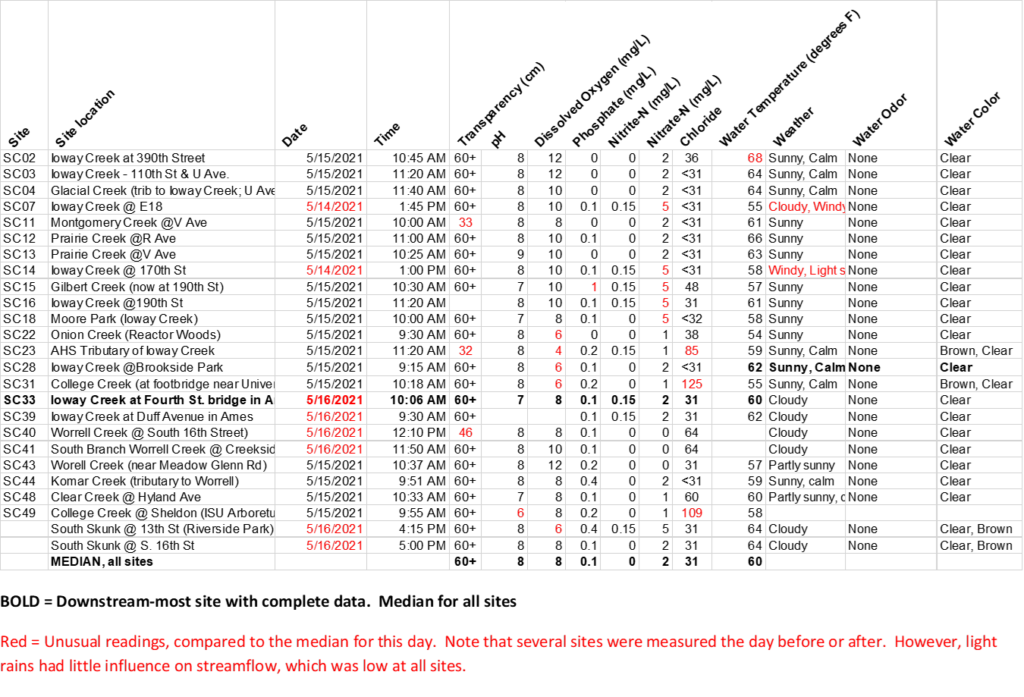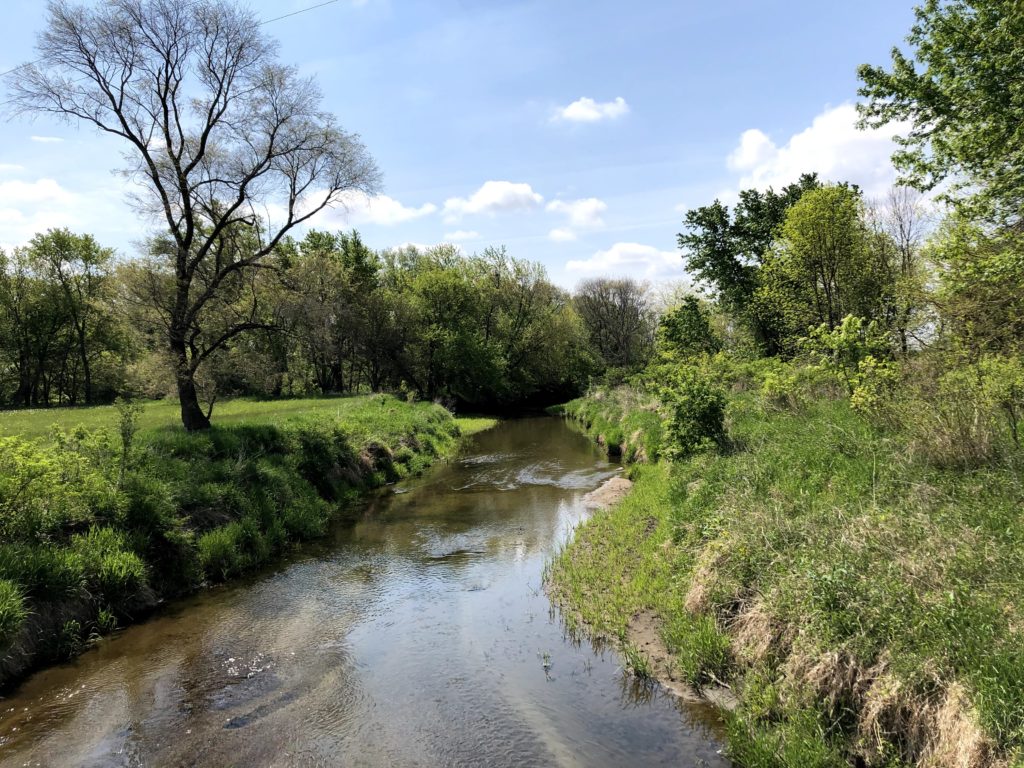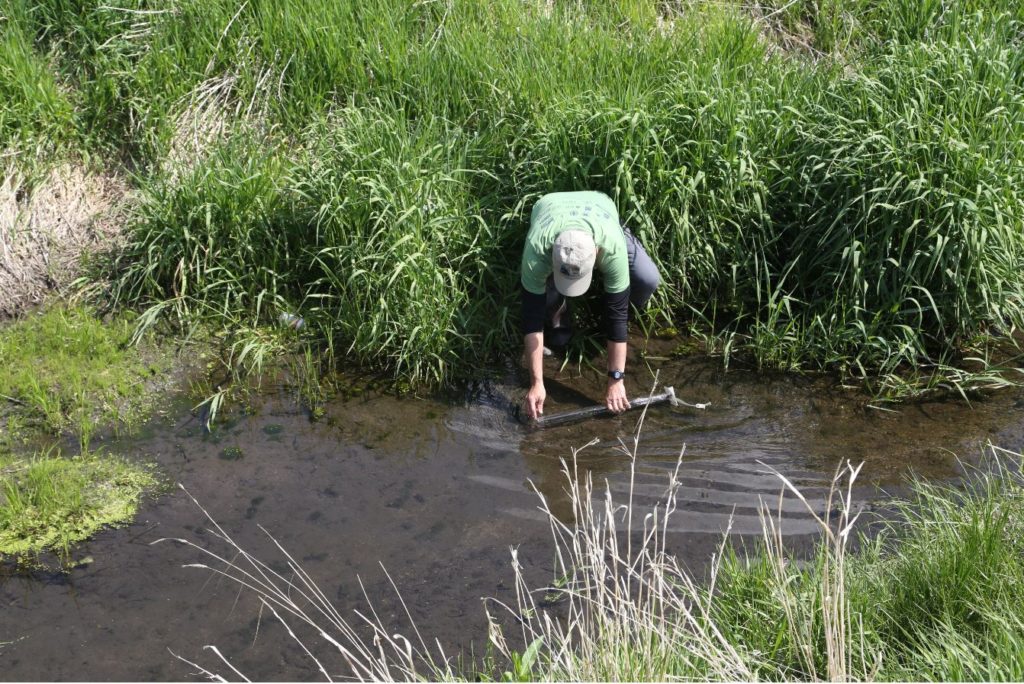Excuse the delay in posting the data. I had shared this with the participating volunteers but not with a broader audience. I was distracted by the dramatic change in water quality a week later. However, the results from the spring snapshot event is more typical of what we’ve been seeing this year–clear and drying up!
On the weekend of May 15, fifteen volunteers tested 25 sites on Ioway Creek and its tributaries.

Like most of 2021 so far, water levels were way below normal, and light rains Saturday afternoon did little to change things. A few volunteers tested their sites Sunday, but water levels had dropped back down by the time.

With streams running low and tiles not flowing at all, most sites were as clear as we can measure (transparency greater than 60 cm), had low nitrate (2 mg/L or less) and low phosphate (0.1 or less).

But there were a few interesting exceptions.
Nitrate concentrations were a little higher (5 mg/L) in the middle reaches of Ioway Creek, starting at Hwy E18 in Boone County and continuing to Moore Park in Ames. The upstream reaches in Hamilton County and the downstream reaches in Ames had low nitrate levels.
“Gilbert Creek” had higher nitrate (5 mg/L) and much higher phosphate (1 mg/L) than other sites. When streams are running low, effluent from wastewater treatment plants can make up a significant portion of streamflow and can have a big influence on water quality. When streams are running high, effluent becomes a small fraction of streamflow compared to runoff from cropland. Wastewater plants in Iowa are only beginning to install technology to improve nitrogen and phosphorus removal.

Some urban streams showed elevated chloride levels (125 mg/L), but still within Iowa standards for aquatic life (389 mg/L thresholds for chronic exposure). Road salt dissolves and makes its way into groundwater, so we can see it’s influence in spring and summer, but testing before and after winter storms can give us a clearer picture.
The little creek below Ames High School (SC23) had muddy water (transparency of 32 cm) and dissolved oxygen low enough to harm aquatic life. We know that when it does rain this creek gets a lot of stormwater runoff (the video we produced with City of Ames shows this in action) and construction could also be an influence.
I don’t have a good explanation for lower dissolved oxygen and transparency at other locations.

Thanks to our volunteers for spending a morning testing water! Our next event will be in October.
